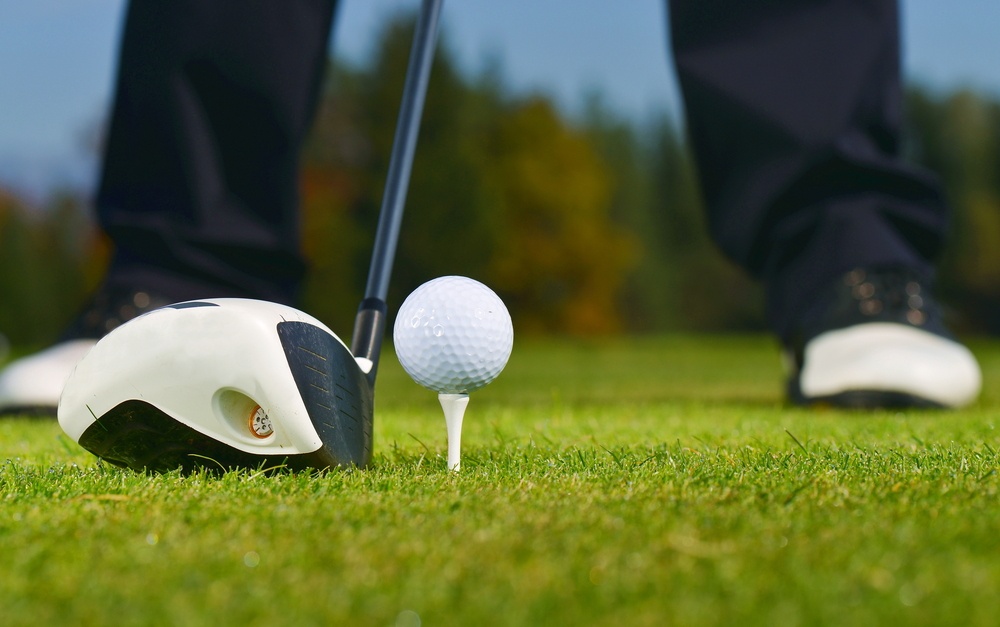While golf may lack the intense running and jumping common in higher impact sports, it still requires repetitive motions that place significant pressure on your joints. These movements, especially if done incorrectly, put stress on the body that can eventually lead to debilitating injuries.
Here’s what you should know about five of the most common injuries that golfers are susceptible to, along with steps you can take to prevent them.
1. GOLFER’S ELBOW
Golfer’s elbow is an inflammation of the tendons in the inner elbow, usually due to overuse. Patients suffering from this condition typically experience pain, stiffness, and a burning sensation in their inner elbow. They may also feel numbness in their fingers or weakness in their hands and wrists. Treatment typically consists of applying heating or cooling pads, wearing compression garments or a specialized elbow brace, and physical therapy. On rare occasions, minimally invasive surgery may be needed to repair damage to the tendons.
As its name suggests, golfer’s elbow is an occupational hazard for golfing enthusiasts. By adequately warming up and strengthening your forearms, however, you can significantly decrease your risk. Also, make sure not to lock your lead arm while you swing.
2. ROTATOR CUFF TEARS
Rotator cuffs can be torn in response to acute trauma, overuse, or the simple wear and tear associated with aging. These tears are characterized by a prominent pain in the shoulder which increases when lifting the arm above the shoulder. Most patients also notice an inability to lower the arm and a general sense of weakness in the muscles in the shoulder. For minor tears, physical therapy and anti-inflammatory medication are usually sufficient treatment. For full tears, minimally invasive arthroscopic surgery may be necessary.
You can largely prevent rotator cuff tears with a fitness regimen that includes stretching and low-resistance, high-repetition strengthening exercises. Since the rotator cuff muscles are relatively small, they’re best strengthened through exercises that involve controlled raising, lowering, and rotation of the arm.
3. BACK PAIN
Whenever you swing a golf club, you subject your spine to significant rotational force. As a result, many avid golfers are at a heightened risk of developing chronic back pain, which can later prevent them from golfing altogether. Symptoms of a back injury include a limited range of motion, chronic aching in the muscles surrounding the spine, and, in some cases, a sharp pain in the leg or buttock.
Almost everyone tweaks their backs at some point, regardless of whether they golf, and most of these minor injuries can be resolved through rest and conservative treatment. As with other common golf injuries, you can prevent back pain by stretching and warming up. Surgery should be considered only if symptoms do not respond to non-invasive treatments.
4. KNEE PAIN
Much like your back, your knees are subject to significant lateral pressure with every swing. At some point, this stress may result in knee pain, especially when twisting or bending the knee. This pain is most often caused by a strained tendon, weakened cartilage, or a misalignment or dislocation of the knee cap. Minor cases are treated with rest, icing, wearing compression garments, elevating the knee, and, if necessary, by using supporting structures such as braces or tape. More extreme cases may require arthroscopic surgery.
The lead knee in your golf swing is especially susceptible to injury. Fortunately, small adjustments to your stance can make a big difference. By shifting the angle of your left foot further towards your target, you can lessen the pressure on your knee. While it may take some getting used to, this adjustment could prolong your career for years.
5. WRIST TENDONITIS
Wrist tendonitis is an inflammation of the tendons that connect the bones in your fingers to the muscles in your forearm. This condition generally causes pain in the wrist, which can be accompanied by swelling, redness, warmth, and a grinding sensation. Treatment involves icing, splints, therapy, and anti-inflammatories, with surgery as a last resort.
To avoid wrist tendonitis, make sure your grip is relaxed while you play. Clenching your club too hard is not only incorrect form, but puts unnecessary stress on the tendons in your forearm.




